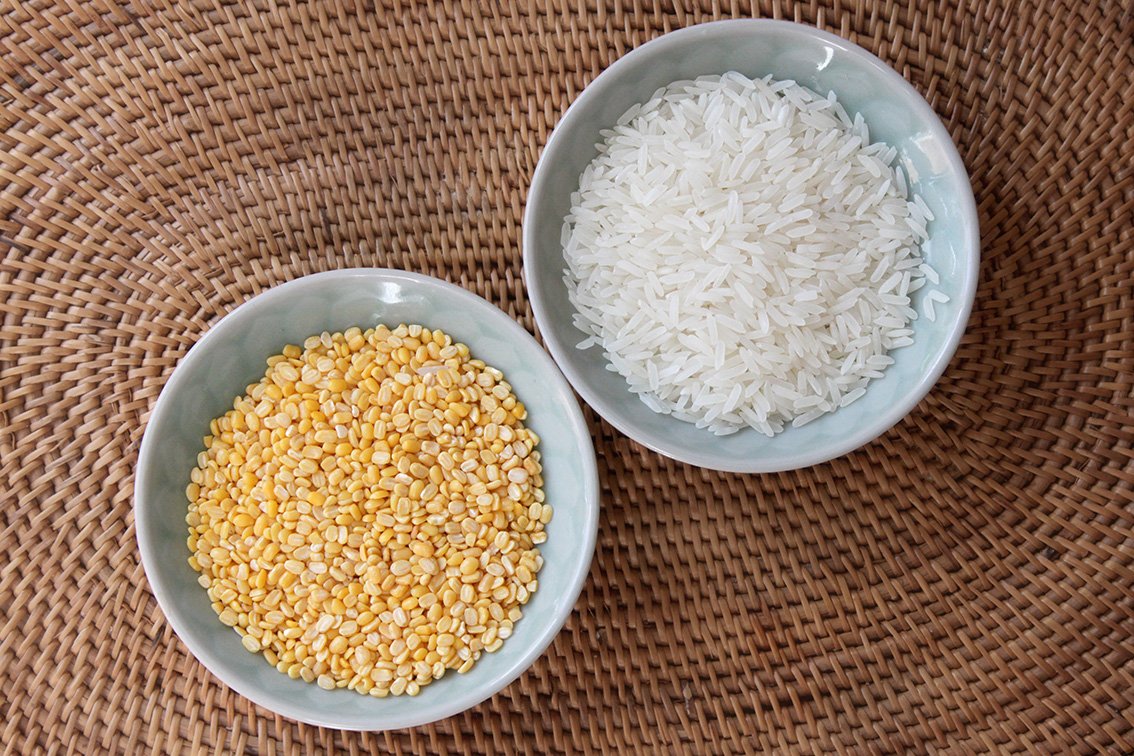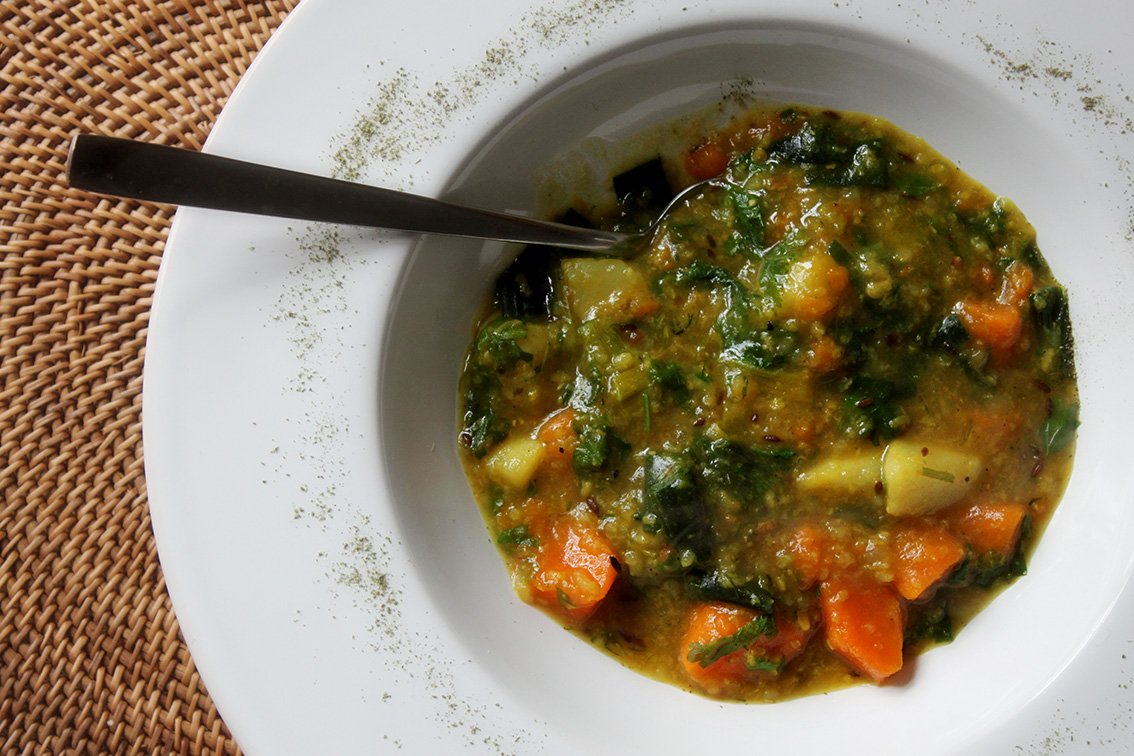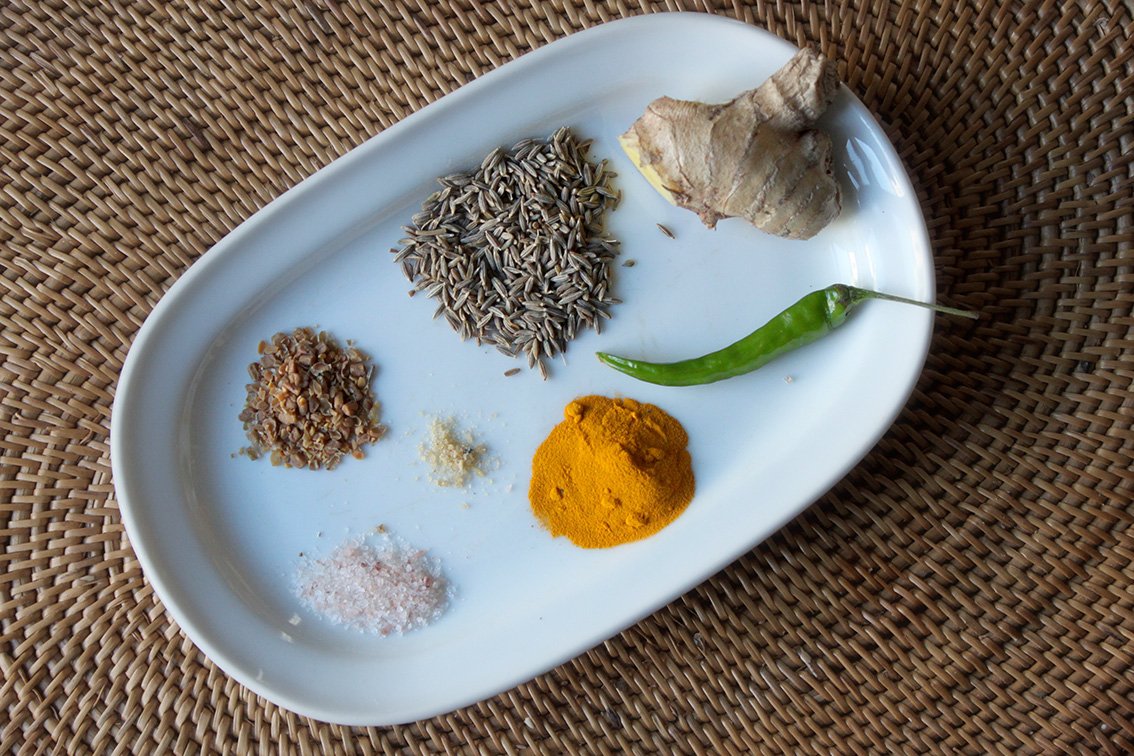Recipe for Kitchari - a whole food Ayurvedic recipe
Kitchari plays a central role in Ayurveda. It is a mixture of grains and legumes, as well as ghee, various vegetables and spices.
The main properties of Kitchari are the following:
- very easy to digest
- tridoschic ( balances the three doshas Vata, Pita and Kapha and is suitable for every constitution)
- it has a detoxifying effect
- it is complete (cereals and legumes provide proteins and vegetables provide the necessary fibers)
- it supports the blood sugar level
- it is a soothing balm for body and soul.
Kitchari is recommended in case of :
- necessity of a break from other foods
- illness
- during the period of recovery
- fatigue
- weak digestive fire
- menstruation
- a detoxification cure for a couple of days
Keeping one day of Kitchari per week ensures a healthy metabolism.
Ingredients:
- Basmati rice
- mung daal
- fresh ginger
- seasonal vegetables
- onion (optional)
- green chili (optional)
- ghee (clarified butter)
- fresh herbs (optional)
spices:
- fenugreek ( in seed form)
- cumin ( in seed form)
- coriander ( in seed form, optional)
- fennel ( in seed form, optional)
- asafoetida* in powder form
- turmeric ( powdered)
- black pepper (freshly powdered)
- himalayan salt
Rinse the mung daal and basmati rice well and soak overnight. Use equal amounts of each (for one person: a handful of each is usually enough, even some is often left over for dinner).
The next day:
- wash the soaked mixture well
- Place in a pot with two to three times the amount of water and heat
add:
- freshly grated ginger (according to taste)
- 1/4 to 1/2 tsp fenugreek seeds
- Himalayan salt according to your taste
- pepper according to your taste
- green chilli finely chopped (optional)
Cover the cooker with a lid and let it boil. There is a tendency for the mixture to boil over. Slightly opening the lid will help to prevent this.
Chop the vegetables roughly and add them little by little according to the cooking time. You need to stir regularly and perhaps add a little (hot) water to prevent it from getting too thick. At the end of the cooking, turmeric is added. When the rice and lentils are creamy, the kitchari is perfectly cooked.
Meanwhile, heat the ghee in a small pan beside (1/2 to 1 tbsp depending on the amount of kitchari), when it is well heated, add the spices:
- 1/2 tsp cumin seeds
- 1/2 tsp coriander seeds (optional)
- 1/3 tsp fennel seeds (optional)
- a pinch of asafoetida
This is a delicate moment because the spices burn quickly, which should be avoided. Add then the roasted spice mixture to the kitchari. To take everything from the pan, you can also put some kitchari in the pan, stir well and put it all back in the cooking pot.
At the end, you can top it with fresh herbs such as cilantro, basil or other herbs of your choice, depending on the season and your taste.
Any time of year is perfect for this recipe, as it is variable with seasonal vegetables and different spices.
Enjoy!
* asafoetida: dried gum resin of asant with many properties, especially against gastrointestinal and respiratory problems.



